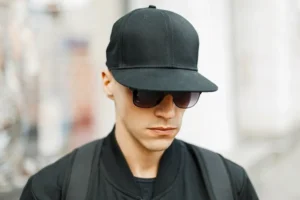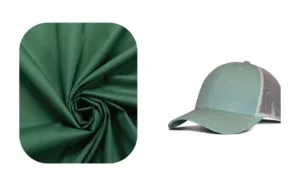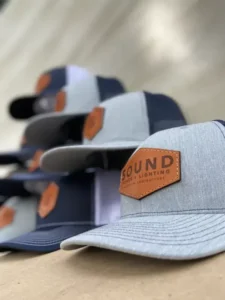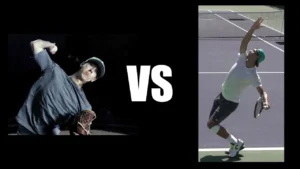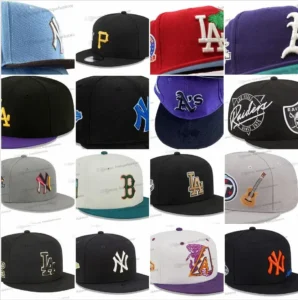Baseball caps aren’t just merch or sun visors—they’re daily gear. And like any good tool, the right one depends on fit, fabric, and function.
Quick Answer: The best men’s baseball cap balances head-specific fit, activity-appropriate style (fitted, snapback, or low-profile), climate-matched fabric (breathable, water-resistant, or UV-rated), and a brim that suits your use (curved for sport, flat for street). Comfort and materials should always come first; details like sweatband tech and closures determine long-term wearability.
Last summer, a client swapped his heavy cotton cap for a recycled-nylon low-profile with a dark underbill before a weekend tournament. He later told us: fewer headaches, less glare, and his fastest time in months. That’s the power of choosing on purpose—not by logo.
1. What makes a baseball cap “the best” for men today?
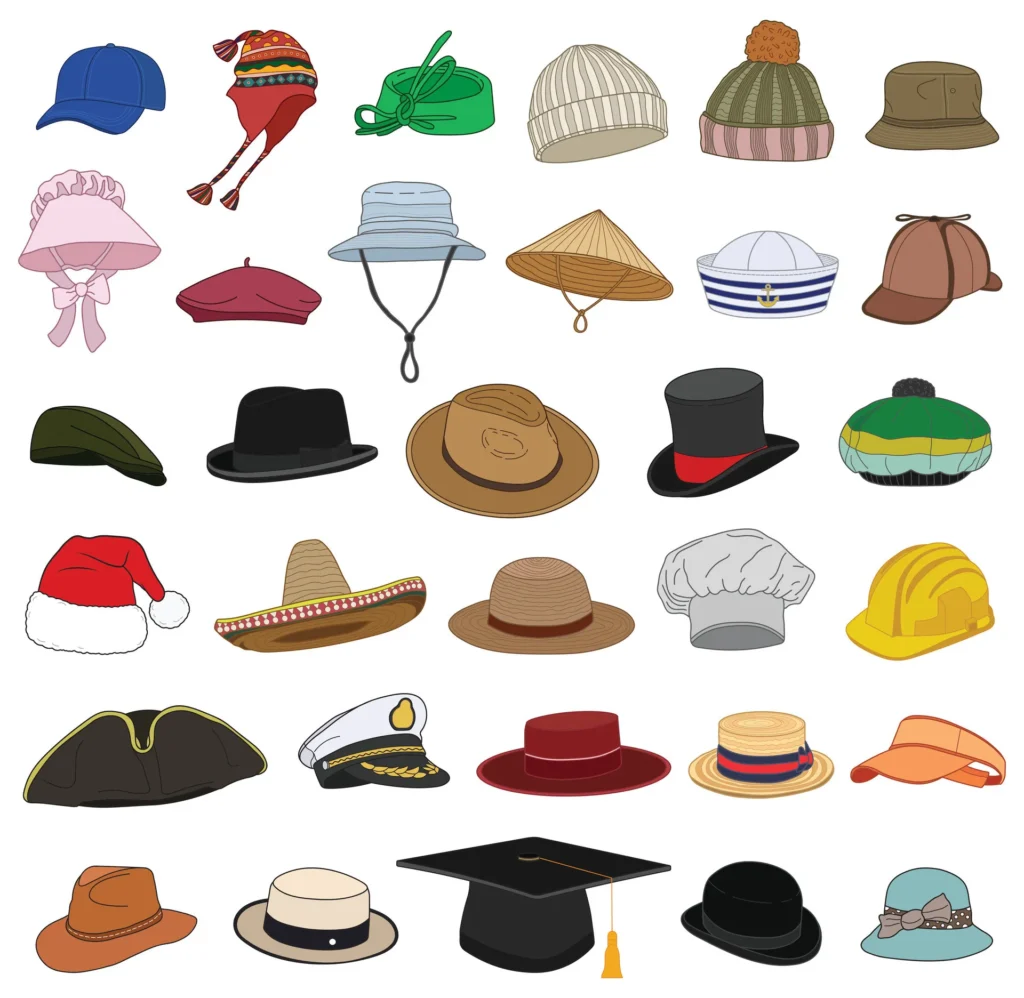
The “best” cap is the one you’ll actually wear: dialed-in fit, fabric chosen for your climate, a brim that matches how you move, and build quality that survives sweat, rain, and travel. Form follows function; comfort rules style.
Fit is non-negotiable
- Head shape matters: Oval heads usually love low-profile crowns; round heads often prefer mid or structured profiles that add height and balance.
- Contact points: Hot spots on the temples or forehead mean the crown shape is wrong, not just the size.
Function beats fashion
- Sport: Moisture-wicking bands, perforated panels, curved bill, dark underbill to cut glare.
- Commuting/travel: Packable crown, quick-dry fabric, crush-friendly visor.
- Streetwear: Structured crown, flat bill, crisp paneling; prioritize shape retention over max breathability.
Materials decide lifespan
- Cotton twill: Soft hand, classic look, easy to wash; slower dry.
- Recycled polyester/nylon: Light, fast-drying, abrasion-resistant; ideal in humidity.
- Technical blends: Add stretch, water resistance, or UPF 50+ for sun.
Details that make or break
- Sweatband tech: Antimicrobial, wicking bands reduce salt rings.
- Seam & stitch density: Tighter SPI = stronger curves and longer life.
- Closure hardware: Rust-proof, low-profile buckles or reliable snaps outlast cheap fittings.
Comparison Table – Core Factors for “Best” Cap
| Factor | Why It Matters | Example Choice |
|---|---|---|
| Fit | Comfort, no pressure points | Low-profile crown for oval heads |
| Function | Matches activity | Perforated panels for running |
| Fabric | Climate suitability | Recycled nylon for humidity |
| Details | Longevity & feel | Antimicrobial sweatband |
2. Which cap styles suit different heads and occasions?

Pick styles by head shape and setting: low-profile “dad” caps flatter oval heads; structured or mid-profile caps balance round faces; snapbacks offer easy adjustability; fitteds look polished. Choose breathable performance caps for heat, structured street styles for fashion.
Common Styles & When to Wear Them
- Low-profile/dad cap (unstructured, curved bill): Soft crown hugs the head, casual and forgiving. Best for oval heads, travel, and hot days in lightweight fabrics.
- Mid/structured 6-panel: Adds height and clean lines; suits round faces. Ideal for uniforms or fashion-focused looks.
- Snapback: Adjustable and versatile; works for varied hairstyles and shared wear.
- Fitted: Sleek, tailored appearance; needs exact sizing.
- Performance running/training caps: Featherweight, vented, quick-dry; great for sport and humid climates.
Comparison Table – Cap Styles vs. Best Use
| Style | Crown | Brim | Best For |
|---|---|---|---|
| Low-profile/dad cap | Unstructured | Curved | Everyday casual, travel |
| Mid/structured | Structured | Curved/flat | Balanced style, uniforms |
| Snapback | Structured | Flat/slightly curved | Streetwear, adjustability |
| Fitted | Structured | Curved/flat | Polished, exact fit |
| Performance cap | Lightweight | Curved | Sports, humid climates |
3. How do you choose the right size and fit (fitted vs. adjustable)?
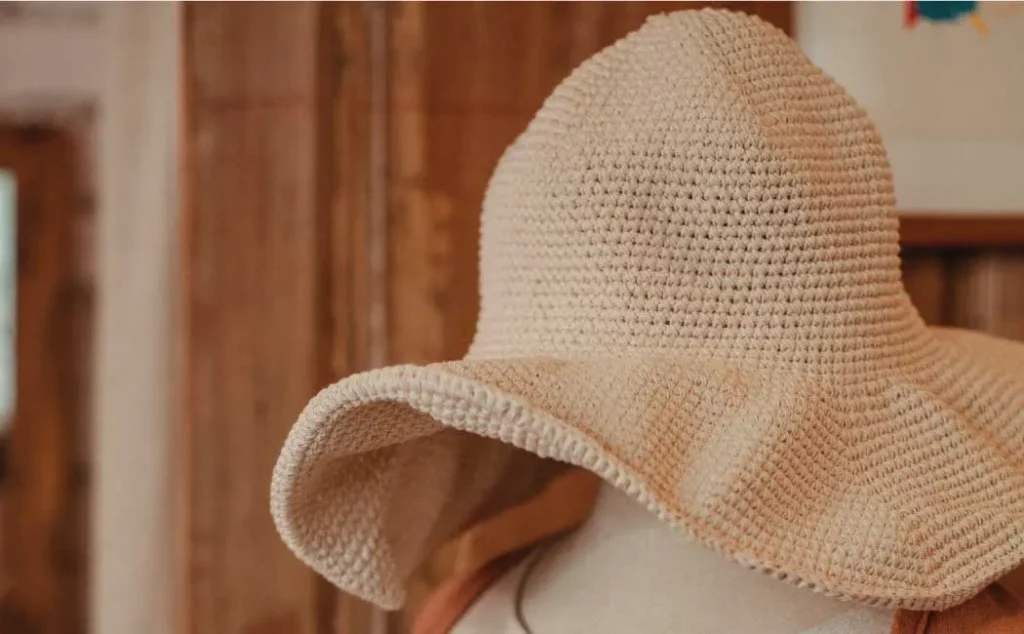
Measure where the cap sits, check brand charts, then pick fitted for a sleek look or adjustable (snap/strap) for flexibility. Oval heads often like low profiles; round heads benefit from mid/structured crowns.
Sizing tips
- Wrap a tape above ears and brows; match to brand charts.
- Test for pressure points after 15 minutes of wear.
- Fitted caps = polished look, adjustable caps = flexible use.
Quick Sizing Reference
| Circumference (cm) | US Fitted Size |
|---|---|
| 54–55 | 6 7/8 – 7 |
| 56–57 | 7 1/8 – 7 1/4 |
| 58–59 | 7 3/8 – 7 1/2 |
| 60–61 | 7 5/8 – 7 3/4 |
| 62–63 | 7 7/8 – 8 |
4. Is fabric or performance tech more important for comfort and durability?
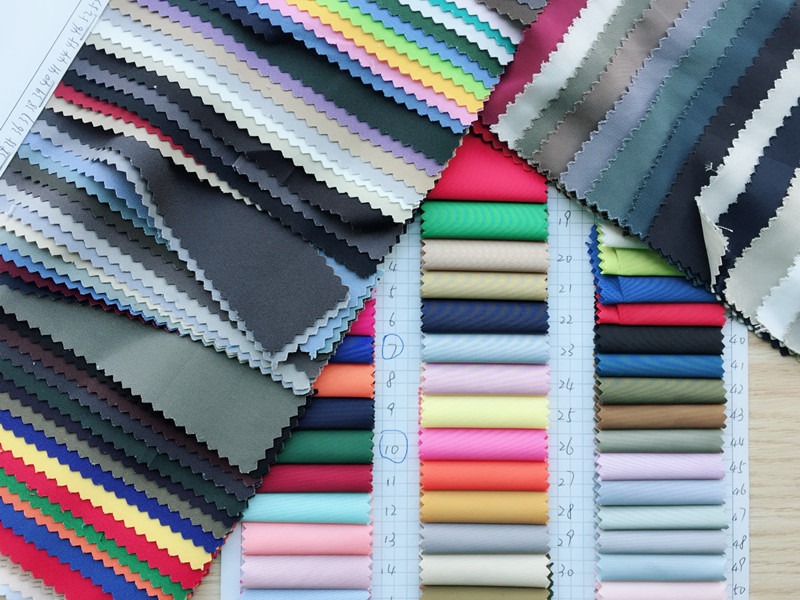
Both matter. Fabric should match climate; performance tech should match your activity. Cotton feels soft but dries slowly, synthetics excel in heat and sweat, and blends can add stretch, water resistance, or UV protection.
How fabric really affects feel and lifespan
- Thermoregulation & breathability: Open-weave nylon or micro-perforated poly moves heat and moisture faster than dense cotton twill. In humid conditions, synthetics avoid that “wet sponge” feel.
- Weight & weave density: A 120–160 gsm lightweight performance fabric feels cooler and dries quicker; heavier 200+ gsm cottons hold shape but trap heat.
- Finishes & coatings: Enzyme-washed cotton gives a broken-in hand; DWR (durable water repellent) helps sheds drizzle; cire or calendered finishes add wind resistance but can reduce airflow.
- Sustainability signals: Look for recycled (RPET) yarn content, OEKO-TEX® or Bluesign® fabric compliance, and water-based inks—good for both brand story and wearer comfort.
- Sweatband materials: Terry cotton is plush but dries slowly; performance meshes or branded moisture-wicking knits disperse sweat and reduce salt rings.
- Crown structure: Stiffer buckram maintains a crisp front panel for logos; foam-front truckers give volume but can feel warm—choose mesh backs if heat is a concern.
Fabric Comparison
| Fabric | Best For | Key Strength |
|---|---|---|
| Cotton twill | Daily wear | Comfort, classic style |
| Recycled polyester | Sport, travel | Fast dry, durability |
| Nylon | Running, hiking | Light, breathable |
| Wool blend | Cooler weather | Warmth, structure |
| Tech blends | All-day wear | Adaptability, stretch |
5. Are flat or curved brims better—and when should you wear each?
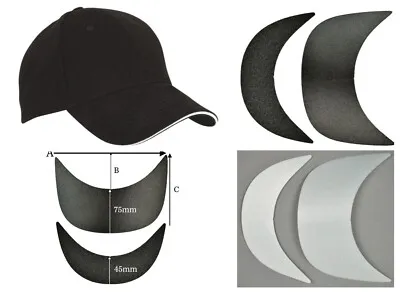
Neither is “better.” Curved brims hug the face and cut glare; flat brims are structured and bold. Curved suits sport and sun; flat works best in style-forward outfits. Many men own both for flexibility.
How brim geometry changes performance and look
- Length & angle: Longer, slightly down-angled curved brims shade the eyes better at midday; a neutral-angle flat brim maximizes logo visibility and a sharp silhouette.
- Underbill color & material: Dark, matte underbills dampen reflected light; lighter or glossy underbills can bounce glare in bright settings.
- Face shape pairing:
- Round/wider faces: a structured crown with a flatter brim adds definition.
- Long/narrow faces: a gentle curve softens lines and balances proportions.
- With eyewear: Curved brims typically clear sunglass frames more easily; flat brims can tap larger frames unless the crown sits slightly higher.
When to bend or keep it flat
- Sport & driving: Pre-curved for glare control and aerodynamic feel.
- Street & events: Keep it flat for a crisp, modern look and clean patch/embroidery presentation.
- Windy days: A moderate curve reduces lift; flat brims can catch more air.
- Shaping tip: If adjusting, make only small, even bends along the entire brim—avoid sharp kinks that create stress points.
Comparison Table – Brim Types
| Brim Type | Look | Function | Best For |
|---|---|---|---|
| Curved | Classic, athletic | Cuts glare, hugs face | Sports, driving |
| Flat | Modern, bold | Branding space | Streetwear, events |
6. How do you clean and care for a baseball cap without wrecking it?
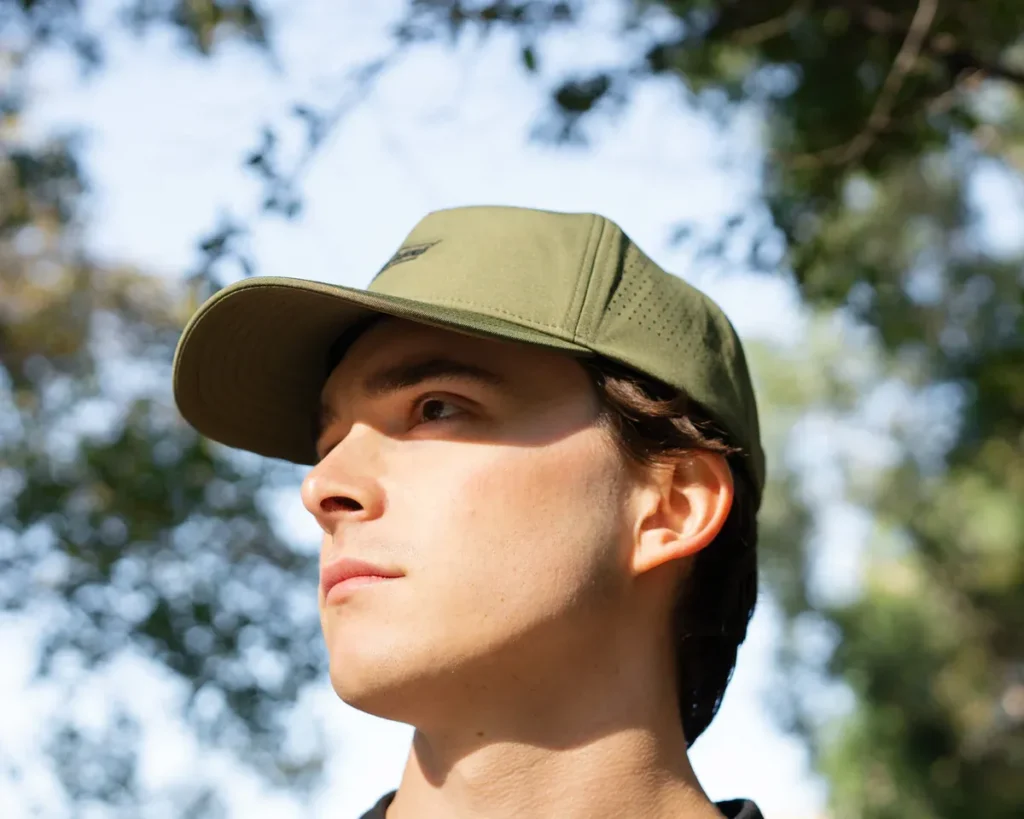
Hand-wash in cool water with mild detergent; avoid high heat. Spot-treat sweatbands, reshape while damp, and air-dry. Machine wash only for sturdy cotton/poly caps in a mesh bag on gentle cycle.
Care tips
- Rotate caps to dry between wears.
- Use sweatband liners for heavy sweat days.
- Rinse salt early to avoid fiber damage.
Go a bit deeper on maintenance
- Know your brim core: If you’re unsure whether the insert is plastic or cardboard, avoid long soaking—treat the sweatband and crown with a damp cloth and mild soap, then rinse quickly.
- Sweat/salt rings: Pre-treat with a small drop of dish soap or a 1:10 white vinegar solution; gently brush, wait 10 minutes, then rinse.
- Odor control: After cleaning, air-dry in shade. For stubborn odors, place a spoonful of baking soda inside the crown overnight (dry use); shake out before wear.
- Stain-by-stain:
- Sunscreen/oils: Dish soap cuts oils; rinse cold first.
- Makeup: Micellar water on a cotton pad, then mild detergent.
- Grass/mud: Let mud dry, brush off, then spot-clean.
- Shape retention: Dry on a cap form or small bowl; avoid direct sun that can fade fabrics and warp plastics. A travel cap cage helps in luggage.
- What to avoid: Bleach, high-heat dryers, and aggressive wringing. Don’t dry-clean foam-front truckers—solvents can degrade adhesives/foams.
Cleaning Method Table
| Method | Safe For | Not For | Key Steps |
|---|---|---|---|
| Hand-wash | Most caps | Cardboard brims | Cool water, reshape dry |
| Machine (gentle) | Sturdy cotton/poly | Delicate fabrics | Mesh bag, cold water |
| Spot-clean | All caps | None | Detergent + soft brush |
Final Thoughts
The right baseball cap is more than an accessory—it’s part of your comfort, performance, and style. Whether you’re choosing for sport, daily wear, or brand identity, focus on fit, fabric, and purpose-driven features.
At Kinwin, we design and produce custom caps tailored to your climate, audience, and brand image. From UPF 50+ performance caps to premium lifestyle designs, our factory’s expertise ensures your customers get a cap they’ll love to wear every day.
Ready to create your custom cap? Contact us today and let’s turn your idea into a high-quality, market-ready product.


